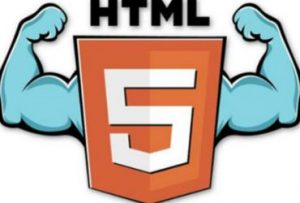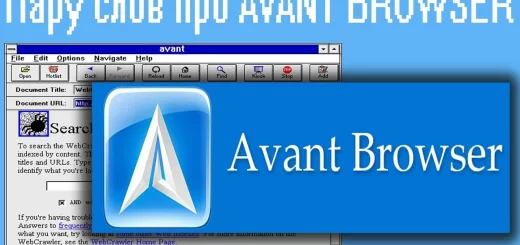HTML5 features , uses , advantages and disadvantages
HTML means Hypertext Markup Language , It is a genuine programming lingo or code of the site page , HTML5 is the latest freshest adaptation of HTML that includes many advantages , It enables direct adding of css files , It is highly advanced for using media files directly such as audio , video , graphics , etc .
HTML5
HTML5 is a markup language , It is the latest standard of HTML , It has many features which allow you to run on the devices specifically designed to consume less electricity , Such as the laptops , the smartphones & the tablets , They have processors which consume less energy than the desktop computers .
HTML5 is a preferred language for structuring & presenting the content on the Internet , It can be used to develop the interactive websites for multiple platforms & browsers , So , The tools for mobile application development based on HTML5 are attractive to the developers who target the mobile users .
The demand of HTML5 is gone up as it becomes the forefront of eLearning development , HTML5 is the current version of Hypertext Markup Language by which eLearning professionals & experts are able to publish & deliver the content to the learner’s iPads , iPhones & the other smart-phones .
Advantages of HTML5
HTML5 helps you embed video & audio , high-quality drawings , the charts , the animation and many other types of rich content without using any plugins or third party programs as the functionality is now built into the browser and you can access HTML5 apps without downloading them to your phones .
HTML5 offers more descriptive & improved semantics , It has richer media elements , You can use cleaner , neater code , You can remove most div tags & replace them with the semantic HTML 5 elements , You can increase the semantic value of the web page because the codes are very standardized by using HTML5 elements .
You will see more greater consistency in terms of the HTML used to code the web page on one site compared to another because the websites adopt the new HTML5 elements , This will make it more easier for the designers & the developers to understand how the web page is structured .
New features & standards have emerged as part of HTML5 , Once you detect the available features in today’s browsers , you can take advantage of those features in your application , You can make easier application with easy front-ends , drag & drop tools , discussion boards , wikis & the other useful elements .
With HTML 5 , While building the site , You can specify the files that the browser should cache , So , if you refresh the page when you are offline , the page will load correctly , This kind of caching has many advantages like offline browsing , files load much faster & reduced load on the server .
The cookies are used to track unique user data for years but they have serious disadvantages , The largest flaw is that all of your cookies data are added to every HTTP request header , This can end up having the measurable impact on response time , So , The best practice is to reduce cookies size .
With HTML5 , we can do better by using session Storage & local Storage ( two different storage in HTML5 ) in the place of cookies , It is not the permanent database , but it enables you to store structured data temporarily .
You can find out where you are in the world & You can share that information with the people with help of Geo-location , Many ways figure out where you are such as your IP address , your wireless network connection , which cell tower your phone is talking to , or dedicated GPS hardware that calculates latitude & longitude from the information sent by the satellites .
The new HTML5 geolocation APIs make the location , whether generated via GPS or the other methods , directly available to any HTML5-compatible browser-based application , The users of HTML5 can get the Drag & Drop API ( Application Programming Interface ) , that is mainly used in eLearning development .
HTML5 presents better document readability for the developer , It offers Screen-reader landmarks & inferred roles , It offers improved Semantics (through differentiation from <div> elements) , It comes with Element-level selector distinction in CSS and developing for HTML5 saves your time .
The users of high-end language do not have to download any software to view the multimedia content in e-Learning courses , So , HTML5 makes it easily possible for eLearning developers as they can develop the games & other interactivities , that are mobile-friendly and there are lots of animations that are possible with HTML5 .
HTML5 code writing is easy to learn in comparison with the other technologies , The companies can save the money if they develop the applications that work on all the operating systems rather than having native apps , You can use the code as a reference for the projects based on Android , Windows or iOS .
HTML5 allows to develop the applications that adapt to different resolutions , screen sizes , aspect ratios & guidelines , The advanced features in the modern devices can be made with HTML5 , They provide the user experience tailored to the context in many devices such as the smartphones & the tablet computers .
Disadvantages of HTML5
HTML5 is not being used widely , So , It would not be accessible by all systems , Only modern browsers support it , The parts of the language are very stable but HTML 5 is considered a work in progress , so technically , any of the elements could change at any time .
HTML5 lacks the monetization power which the Apple & Google app stores provide , The users do not have the central location from which they can look through & purchase HTML5 apps , Instead many of these apps have to rely on the money from advertising .
It is simply not as lucrative , Due to limited access to many mobile phone’s features & varied support of HTML5 across the browsers , The developers have to rely on the workarounds to get the functionality they need .
When the change or the feature is added in iOS , Android or Windows , HTML5 development tool should reflect or take into account the change & make the necessary adjustments in the code , So , The tools of mobile application development platform go behind the official SDK .
It takes too much time to get the mobile applications ready because the developers have to write the code for each platform , The difference in the execution times of the platforms causes the complications in the mobile application development platform .
The developers work in the languages that are not native to the platforms , so , The efficiency of the code depends on the translation engine , It happens that coding techniques are inefficient or the code is redundant .
HTML5 standard was evolved in a short period & this produced the discrepancies in the implementation of CSS attributes , HTML tags and JavaScript APIs , these features behave differently on different platforms , although there are tools available to resolve these discrepancies .
There is ugly fact about HTML5 which is Media Licensing Issues , It can not produce dynamic output , The security elements offered by HTML5 is limited , HTML5 supports modern browsers except for the internet explorer , Older browsers ( such as IE8 & below ) will need JavaScript-based poly-fills & basic CSS to make the elements behave as intended .
The primary drawback with HTML5’s acknowledgment is that cutting edge programs bolster it , HTML5 is an evolving standard , So , Any of its more advanced features could be tweaked or changed during the process of its development .
Web accessibility has not been improved , Tags such as the ubiquitous <alt> tag have been made optional in HTML5 , creating some confusion which could lead to poorer accessibility for the people with handicaps among others .
You can develop rich graphics & animations with the help of Adobe Flash , but when it comes to use HTML5 as option , you are restricted up to some limit as it does not provide that much of flexibility as Flash , So , You can find lots of developers , who are opting for JavaScript and CSS to develop graphics & animation .




